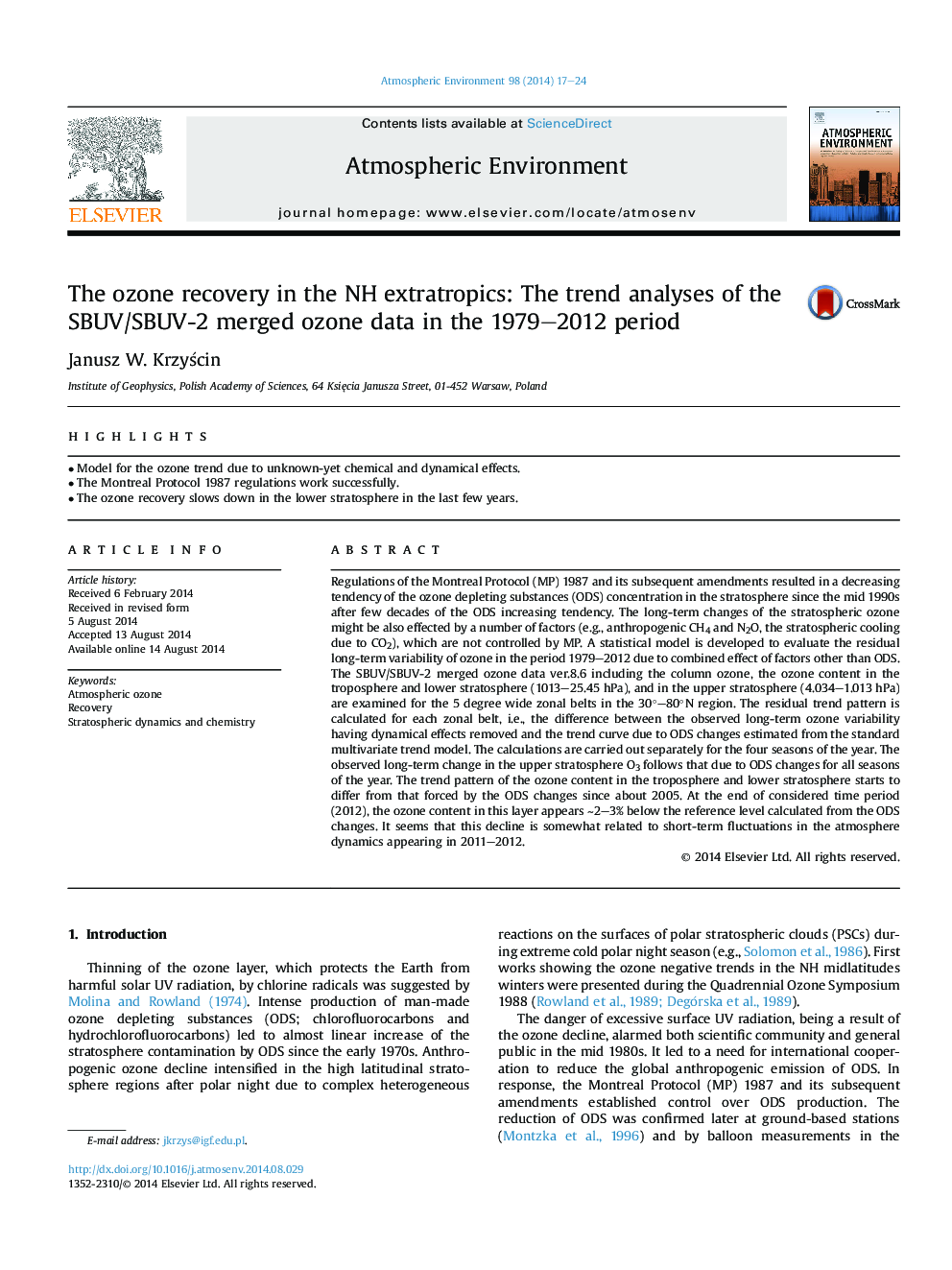| کد مقاله | کد نشریه | سال انتشار | مقاله انگلیسی | نسخه تمام متن |
|---|---|---|---|---|
| 6338898 | 1620373 | 2014 | 8 صفحه PDF | دانلود رایگان |
عنوان انگلیسی مقاله ISI
The ozone recovery in the NH extratropics: The trend analyses of the SBUV/SBUV-2 merged ozone data in the 1979-2012 period
دانلود مقاله + سفارش ترجمه
دانلود مقاله ISI انگلیسی
رایگان برای ایرانیان
کلمات کلیدی
موضوعات مرتبط
مهندسی و علوم پایه
علوم زمین و سیارات
علم هواشناسی
پیش نمایش صفحه اول مقاله

چکیده انگلیسی
Regulations of the Montreal Protocol (MP) 1987 and its subsequent amendments resulted in a decreasing tendency of the ozone depleting substances (ODS) concentration in the stratosphere since the mid 1990s after few decades of the ODS increasing tendency. The long-term changes of the stratospheric ozone might be also effected by a number of factors (e.g., anthropogenic CH4 and N2O, the stratospheric cooling due to CO2), which are not controlled by MP. A statistical model is developed to evaluate the residual long-term variability of ozone in the period 1979-2012 due to combined effect of factors other than ODS. The SBUV/SBUV-2 merged ozone data ver.8.6 including the column ozone, the ozone content in the troposphere and lower stratosphere (1013-25.45 hPa), and in the upper stratosphere (4.034-1.013 hPa) are examined for the 5 degree wide zonal belts in the 30°-80°N region. The residual trend pattern is calculated for each zonal belt, i.e., the difference between the observed long-term ozone variability having dynamical effects removed and the trend curve due to ODS changes estimated from the standard multivariate trend model. The calculations are carried out separately for the four seasons of the year. The observed long-term change in the upper stratosphere O3 follows that due to ODS changes for all seasons of the year. The trend pattern of the ozone content in the troposphere and lower stratosphere starts to differ from that forced by the ODS changes since about 2005. At the end of considered time period (2012), the ozone content in this layer appears â¼2-3% below the reference level calculated from the ODS changes. It seems that this decline is somewhat related to short-term fluctuations in the atmosphere dynamics appearing in 2011-2012.
ناشر
Database: Elsevier - ScienceDirect (ساینس دایرکت)
Journal: Atmospheric Environment - Volume 98, December 2014, Pages 17-24
Journal: Atmospheric Environment - Volume 98, December 2014, Pages 17-24
نویسندگان
Janusz W. KrzyÅcin,